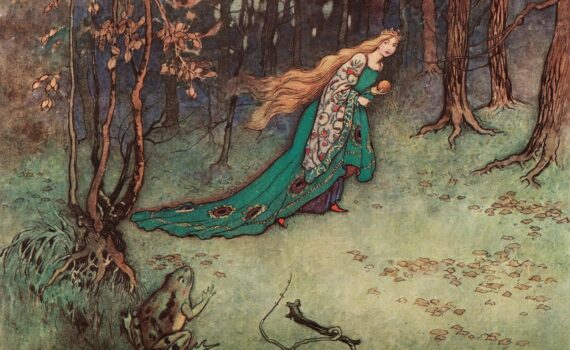Classic fairy tales can be very helpful for children. They encourage imagination, teach right from wrong, and may help kids understand and deal with their feelings. Fairy tales also give parents a chance to talk with their children about old fashioned or outdated ideas that show up in some stories. When parents read fairy tales with their kids and talk about them afterward, the stories can become a great tool for learning and growing. One article from List A that I found interesting is “Sex and Violence in Fairy Tales” by David Isaacs from the Journal of Pediatrics and Child Health. What stood out to me was the idea that many fairy tales have hidden meanings related to sex and emotions, and that they can affect a child’s subconscious in ways we might not realize. From List B, I liked the article “Tell Fairy Stories to Your Children” by Jane Stafford. One idea that caught my attention was how powerful and intense fairy tales can be for kids. It reminded me that it’s important for parents to be careful with how they share these stories, and to talk about them in a way that helps children understand the meaning behind them.
Daily Archives: April 11, 2025
“Sex and Violence in Fairy Tales” editorial by David Isaacs, Journal of Pediatrics and Child Health. I found this article informative on how it explores traditional fairy tales that often contain certain elements of sexualand violent themes. Isaacs notes notes that nese narratives while seemingly innocent, can reflect fantasies related to sexuality , aggression, guilt and family dynamics. Stories highlighted included included ” Little Red Riding Hood” and “Bluebeard” have included descriptive child abuse and violece, predating modern awareness of these issues. Isaascs awareness and emphasive on the importance for the pediatricians amd caregivers is to recognize the significance that these underlying themes may influence childrens influence and their perceptions and emotional development. Good and Bad beyond Belief: Teaching Gender Lessons through Fairy Tales and Feminist Theory” by Jerilyn Fisher and Ellen S. Silber Fisher and and Silber analyze how classical fairy fairy tales like Cinderella, Snow White and Rapunzel convey gendered messages that reinforce patriarchal norms. They argue that these stories often depict young women in passive roles, awaiting to be rescued by male figures, while portraying female antaganoists. such as stephmothers and withces. as embodiments of evil. The author can influence children’s perceptions of gender roles and relationships. Even incoporating or advocating for feminist theory into the teaching of these theorys. The approach aims to foster critical thinking and promote discussions about gender, poer, and societal norms in educational settings. I believe that Fairy Tales can convey a unrealistic ideal of what gender roles are and to be expected of. What feminism is and what heroicinism is. Over the centuries many times have change and womens right have change. Even princess books create a fantasy of one day a little girl finding her princess and growing up to be beautiful and being rescued. And in turn we have […]
My thesis for my research essay on fairy tales is as follows: Fairy tales are helpful for children to use their imagination, learn morals, as well as aid in their development. “The Positive Impacts of Fairy Tales for Children” by Leilani VisikoKnox-Johnson supports that fairy tales aid children’s growth. A quote that caught my attention, because it points to not only reading fairy tales but experiencing them through performance. “One of the central reasons that fairy tales are important is that they aid in child development. Fairy tales are often shaped to test children’s initiative. Not only is reading the story essential, but having the child act out the story is also just as important for developing a child’s consciousness and for his or her moral development.” Maria Tatar brings up interesting points about how fairy tales impact the reader on a visceral level, in “Why Fairy Tales Matter”, which intrigues me because it speaks to what could be seen as an almost universal experience of readers. “Fairy tales also have transformative effects on us, and when we read and hear them, they produce vertiginous sensations…”
Here is my thesis statement: Fairy tales play a crucial role in both child development and cultural storytelling by providing valuable lessons, fostering imagination, and offering therapeutic benefits, despite potential criticisms regarding their traditional narratives. From List A: One article that stood out to me is “The Positive Impacts of Fairy Tales for Children” by Leilani VisikoKnox-Johnson. This article explains how fairy tales help children understand basic human conflicts and relationships while also aiding their moral and emotional development. What caught my attention the most was the idea that fairy tales can be used in therapy, especially for children dealing with illnesses. Storytelling allows kids to express their fears and anxieties in a safe way, which helps them process difficult emotions. This resonates with me because, growing up in Africa, I experienced the power of storytelling firsthand. My uncles and grandparents would gather us around the fire during vacations in the village, sharing traditional tales that taught us about courage and kindness. Each story had its own traditional song, which the storyteller would sing at key moments, adding an artistic element to the experience. These moments were significant in shaping my understanding of right and wrong. From List B: Another article I found interesting is “Why Fairy Tales Matter” by Maria Tatar. Tatar talks about how fairy tales address universal themes like love, courage, and transformation, making them meaningful across generations. Her explanation that these stories connect us to shared human experiences and inspire creativity made me realize how fairy tales are important not only for personal growth but also for understanding cultural values and traditions. During school time in the city, my parents introduced me to modern fairy tales like “Snow White” and “Cinderella,” or as we call them in French, “Blanche Neige” and “Cendrillon.” Watching these tales on […]

